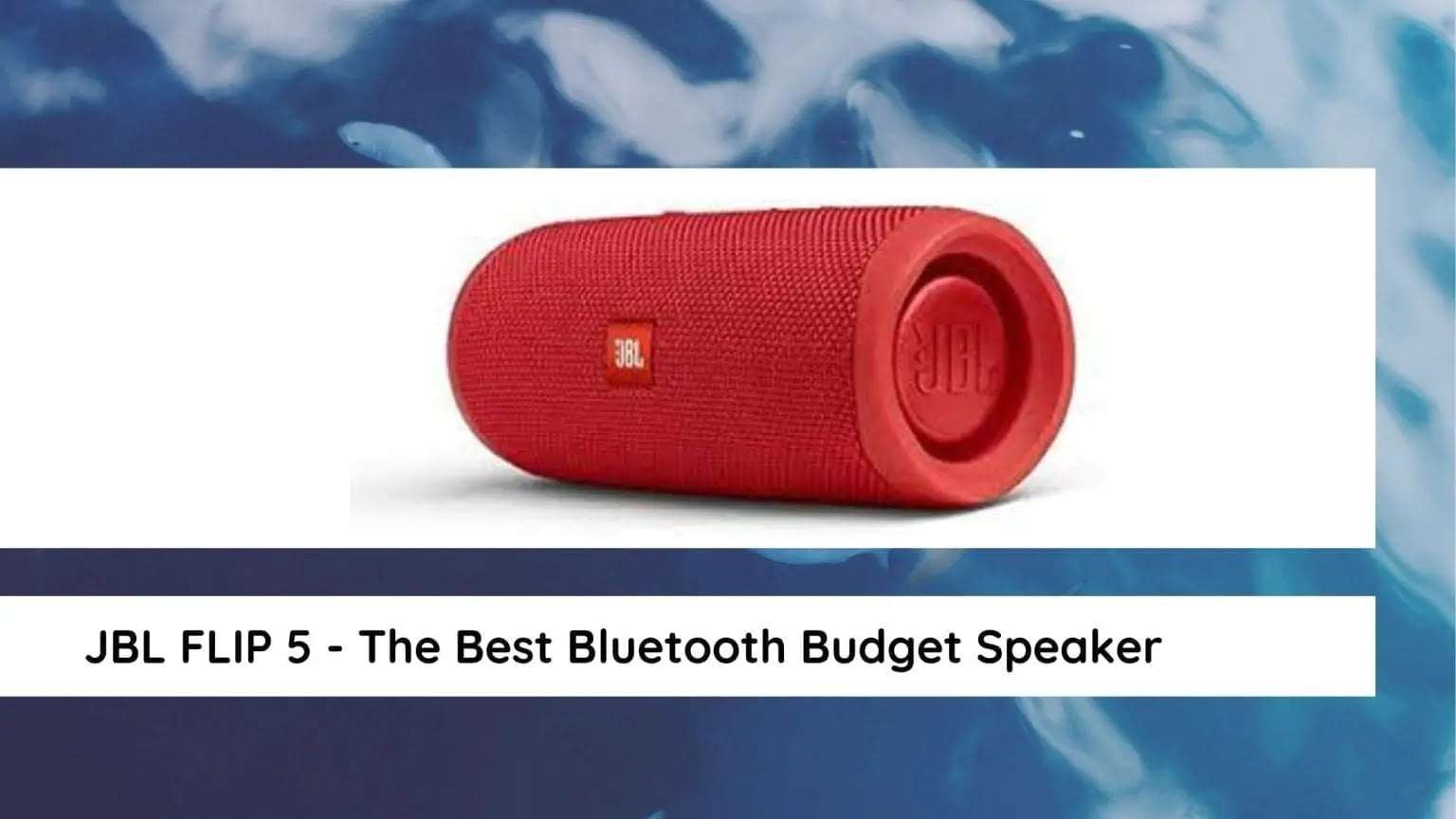A few products stand out above the rest, and the JBL Flip 5 is one of them. The Flip 5 is a worthy successor to the Flip 4, and if you’re going on a vacation trip or simply going outdoors, it’s well worth the asking price.
The JBL Flip 5 was released in August 2019 for $69 as the successor to the Flip 4 that is, with bass-heavy sound and durable design. It’s dropped a few pennies since then, putting it in competition with class-leading competitors like the UE Boom 3 and JBL’s own Charge 4.
The widely available Flip 5 comes in a variety of colors, including Fiesta Red, Ocean Blue, Midnight Black, Steel White, Forest Green, Desert Sand, Mustard Yellow, Dusty Pink, Grey Stone, and River Teal.
Design
Fortunately, Flip 5’s design can prove its abilities anywhere. The compact yet robust Flip 5 weighs half a kg / one pound. It may be simply carried in one hand and can be taken anywhere. Its IPX7 waterproof rating implies it can be submerged for up to 30 minutes in water up to a meter deep.
The passive bass radiators on either end are deep sufficiently into the tubular housing to prevent them from being readily damaged, though we’d be wary of cramming it into a backpack containing sharp or pointed things.
However, we doubt JBL receives many returns for faulty speakers during the guarantee period. The Flip 5, like so many of its JBL brothers, is well-made, flawlessly finished, and very easy to use, with a simple button layout and useful battery indication.
Build
If the JBL Flip series is recognized for anything, it’s for being tough. The Flip series began off as splashproof, then progressed to becoming entirely waterproof—and the new JBL Flip 5 is no exception.
It’s covered in a tough fabric that has an IPX7 grade, which means it can withstand being submerged in water for up to three feet. The exposed bass radiators are protected by a strong rubber on both ends of the speaker.
The power and Bluetooth pairing buttons, as well as the USB-C input for charging the speaker, are located on the rear of the speaker.
When the speaker is turned on and connected to a source device, both of these buttons have lights around them. It’s a handy function that I wish was also available on the fabric’s built-in playback buttons.
While the little protrusion of the buttons from the cloth makes it simple to tell which is which, I think they would be much easier to use in low light if they lit up or were at least painted a different color. While I like the black-on-black design, I believe that making the buttons white or another bright color that contrasts with the speaker will improve legibility.
JBL has chosen not to include an AUX connection for hardwiring a smartphone or other audio device and a built-in microphone for hands-free calls and Siri and Google Assistant activation.
Given their existence on the Flip 4, they’re both surprise absences, though the Flip 4’s support for Bluetooth 4.2 over the newer 5.0 standard is likely rarer.
It’s hardly the end of the world, but it does mean you’ll miss out on quicker data rates and a 240m wireless range (4.2 offers a range around four times shorter).
The charging speed for Flip 5 has been enhanced by JBL. A full charge, which provides 12 hours of playback, only takes 2.5 hours instead of 3.5 hours.
A higher (20-watt) power output and a newly developed, racetrack-shaped 44mm driver with a larger cone area for enhanced sonic amplification appear to promise an improvement in sound quality.
Performance
Recognize the Flip 5 is an inexpensive Bluetooth speaker before reading too much from a substantially smoothed graphic. The 60Hz roll-off is something you can’t just ignore; you’ll have to deal with it no matter what speaker you buy for less than a few hundred dollars.
Furthermore, because you’ll most likely be using this in less-than-ideal conditions, keep in mind that this is just a ballpark figure to give you a sense of Flip 5’s performance.
Because you won’t be listening to this in a sound-dampened or anechoic environment, it won’t always be indicative of what you’ll hear. You’ll listen to it in a room, at a noisy location such as the beach, or in your yard.
JBL improved the driver within the speaker to give it a deeper bass end, and from what I could tell, the manufacturer succeeded. JBL’s wireless speakers have a distinct sound characteristic that resembles the Harman target curve.
Bass sounds from middle C and below get a 2-8dB boost, mids are uniformly highlighted, and highs get a gentle attenuation.
The Flip 5 doesn’t deviate from this trend, and you’ll probably be satisfied with the sound without fiddling with any in-app equalizers or other such nonsense. Take it out of the box and begin using it right away.
Although the bass response appears to have been given more importance this time around than on the JBL Flip 4, it isn’t going to be the best thing you’ve ever heard.
The difference is subtle, and if you’re listening to music in your backyard or on the beach, you’re probably using a low-quality service like Spotify or Apple Music. You won’t notice the intricacies of the bass response if you aren’t paying attention to them.
Still, it was a nice addition to Tame Impala’s The Less I Know, the Better, where the funky bassline is, in my opinion, the song’s main feature. It sounded well enough to hear, however, due to a strong drop-off at roughly 100Hz, I couldn’t get too low.
The Final Word
The JBL Flip 5 has a simple soul – perhaps too plain for some – but that simplicity has allowed JBL to focus on performance and develop one of the best-sounding affordable portable speakers on the market.
It’s appropriate for use outside as well as inside, thanks to its elegant design and an IPX7 rating, making it an ideal outdoor speaker.
As a result, JBL’s reputation for high-quality Bluetooth speakers continues. Long may it continue, on behalf of everyone who enjoys high-quality music on the go.
You might also like,

